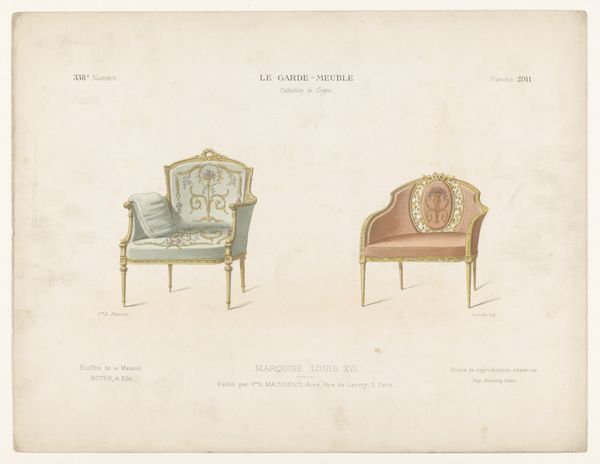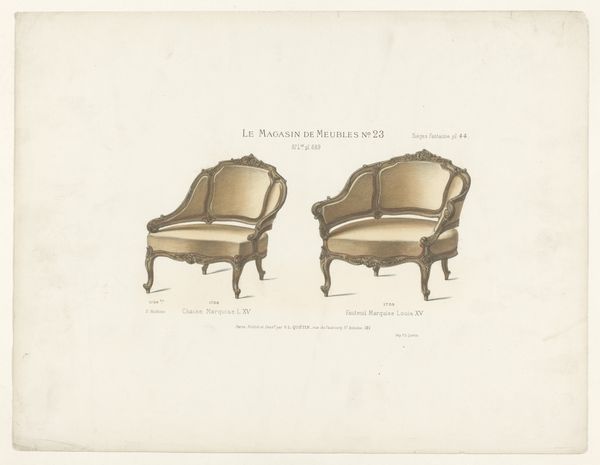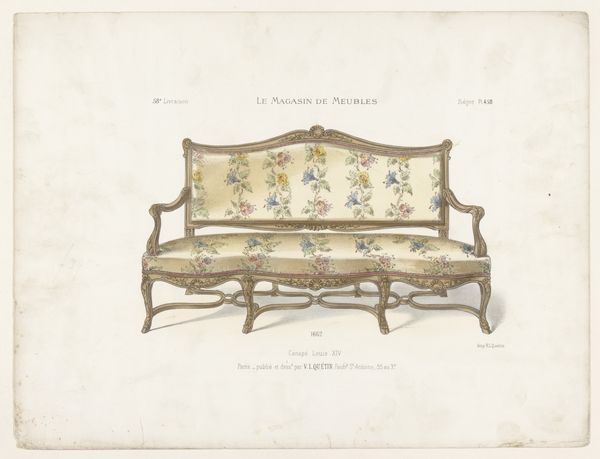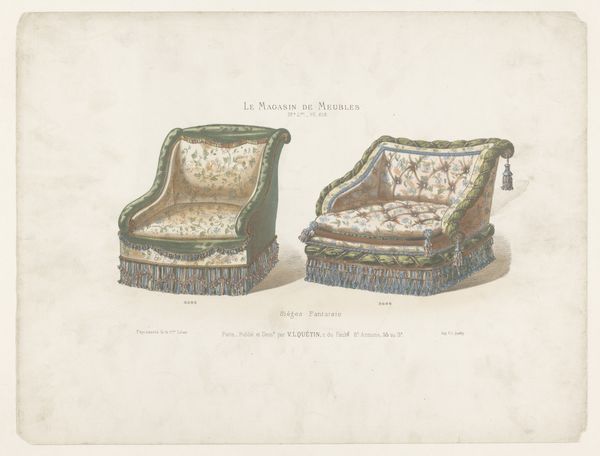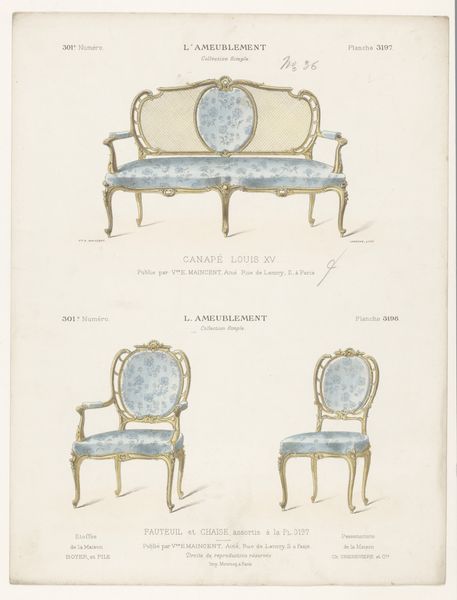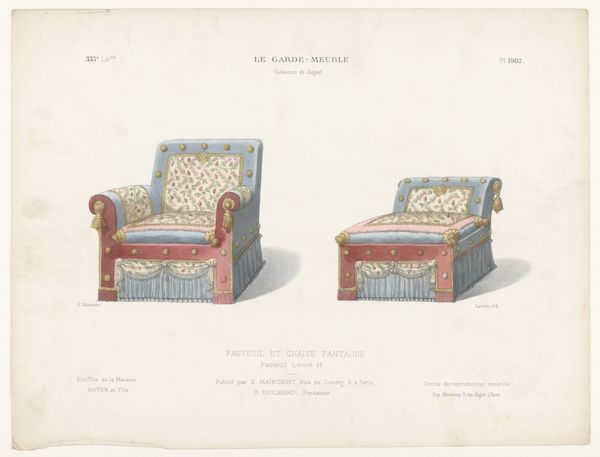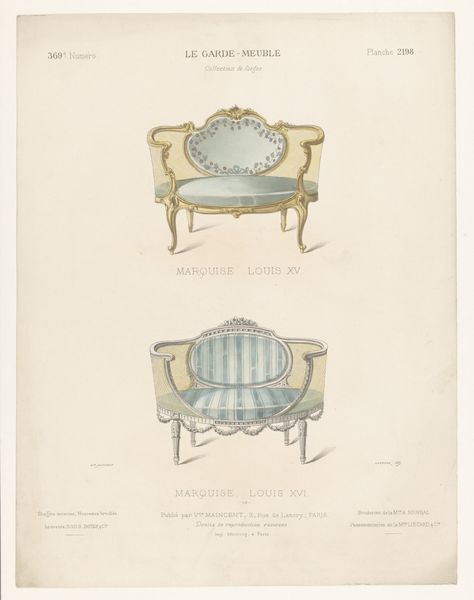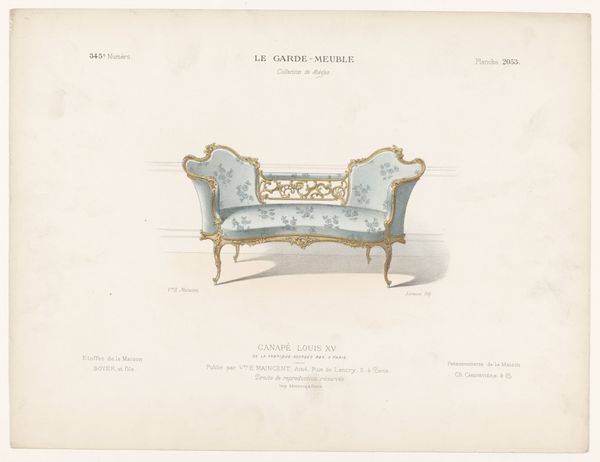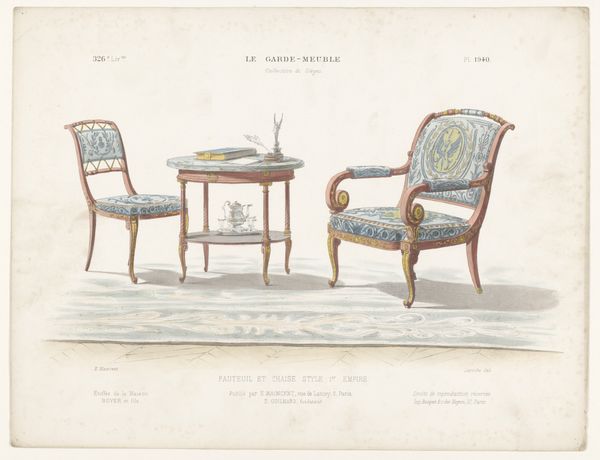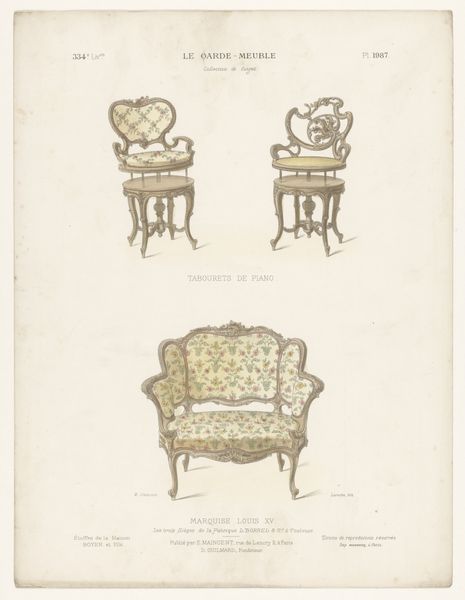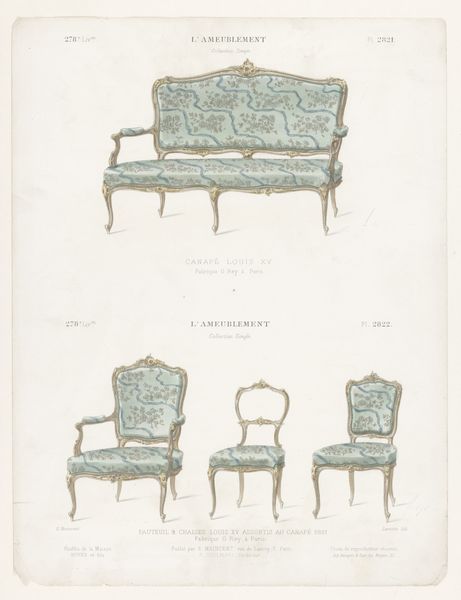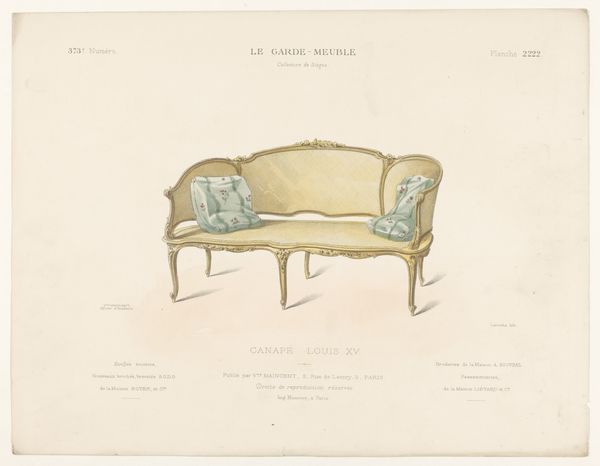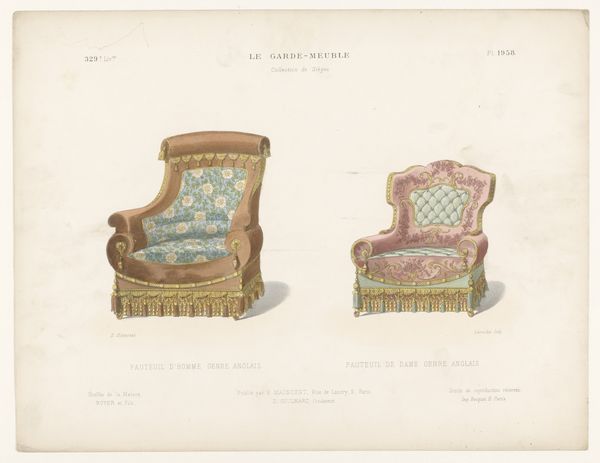
drawing, watercolor
#
drawing
#
watercolor
#
genre-painting
#
decorative-art
#
watercolor
Dimensions: height 278 mm, width 359 mm
Copyright: Rijks Museum: Open Domain
Curator: Immediately, a feeling of lightness. The colors are delicate, almost faded, and the composition is so neatly arranged. It projects a sort of airy elegance. Editor: Well, it certainly whispers rather than shouts. We're looking at an artwork titled "Twee fauteuils," or "Two Armchairs," a watercolor and drawing attributed to an anonymous artist sometime after 1878. Notice the meticulous detail. Curator: Absolutely. The artist’s precision is key to appreciating the lines, curves, and overall structure of these chair designs. I see echoes of decorative art; this piece almost reads as a blueprint or formal study. Editor: A blueprint indeed, for social status, perhaps? These aren't just armchairs; they're signifiers. The material reality—the carved wood, the plush upholstery— speaks volumes about the access to labor and resources in that era. One bears the mark of Louis XV and the other Louis XVI, implying distinct periods, or distinct tastes in decorative materiality. Curator: You're right; we see stylistic differences. Note the first chair’s asymmetrical arm and pastoral scene. Compare this with the other's simple oval back and floral pattern. The contrasts define what makes them formally distinct. Editor: Consider what it means to depict them. The artist, painstakingly rendering each curve, invites a conversation on craftsmanship. Are we meant to consider the artisans and their workshops, or is it only a catalogue of bourgeoise interior decoration? Curator: It's an intentional removal, I think. Genre painting gives us a curated slice of life, concerned with aesthetics and idealized settings, yet glossing over the material conditions in which these furnishings come to exist. Editor: Exactly. And even the medium, watercolor, contributes. Think of the labor of producing pigment, the cost of paper—every artistic choice imbeds social stratification in these decorative illustrations. Curator: It makes one consider how something as seemingly functional as an armchair can encapsulate layers of social meaning and historical context. I appreciate the image all the more with these considerations in mind. Editor: Likewise. To trace how even decorative artwork conceals its own materiality invites questions regarding consumption, production, and what is ultimately revealed in that visual exchange.
Comments
No comments
Be the first to comment and join the conversation on the ultimate creative platform.
